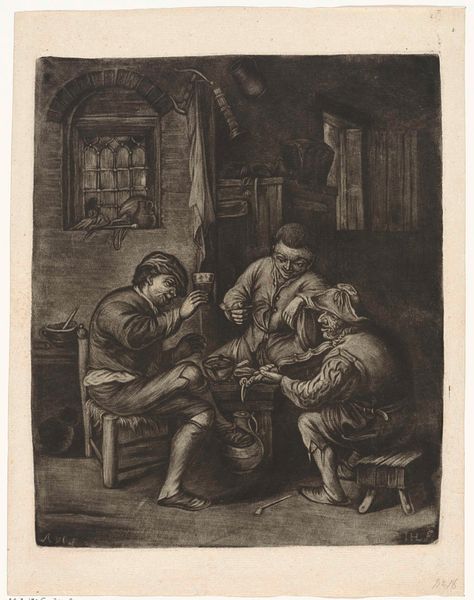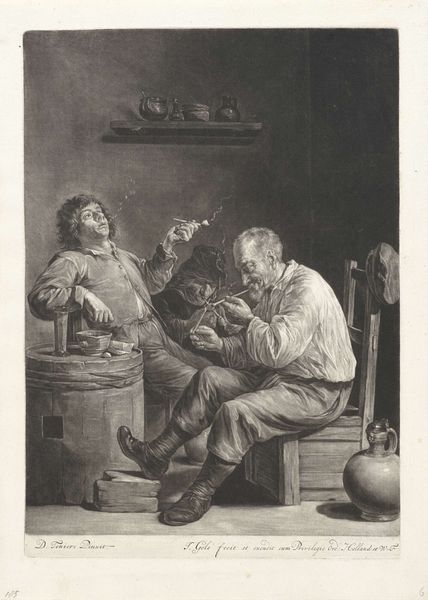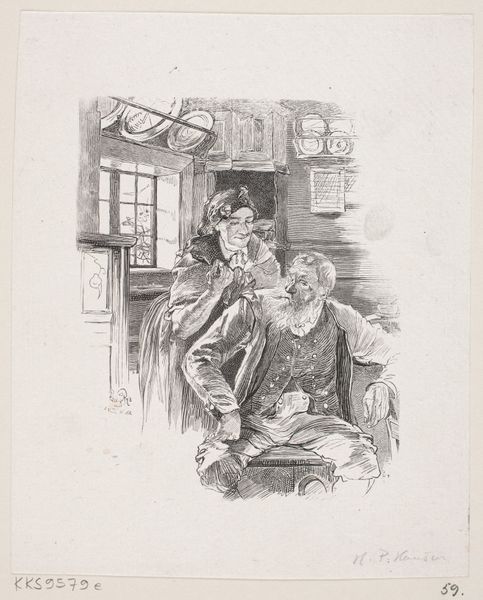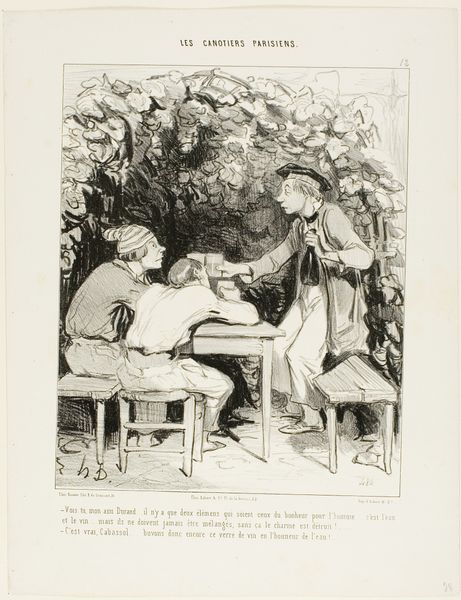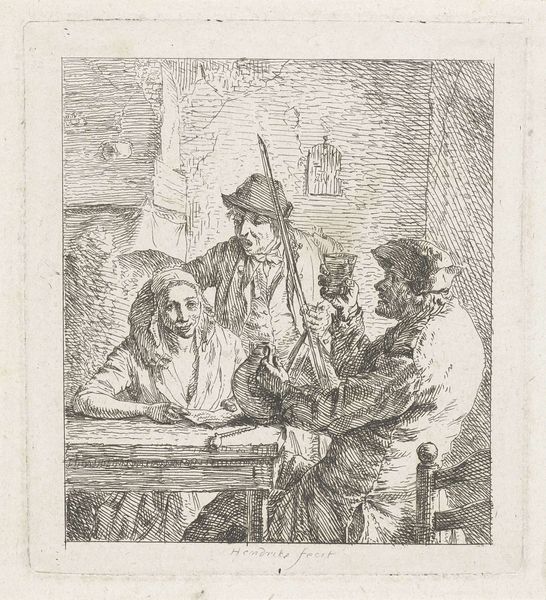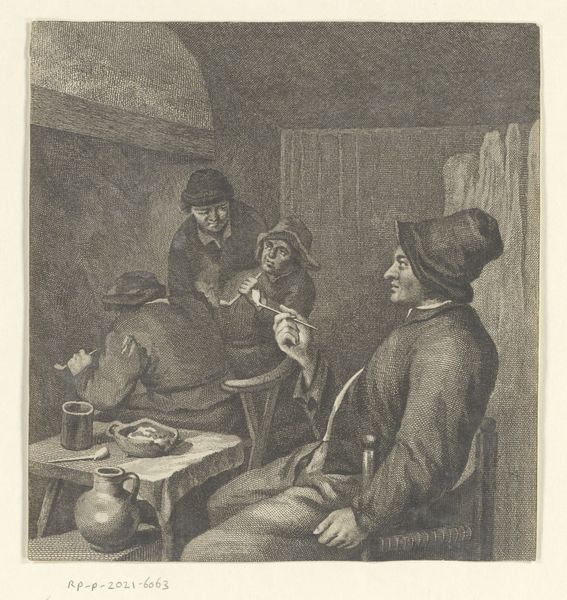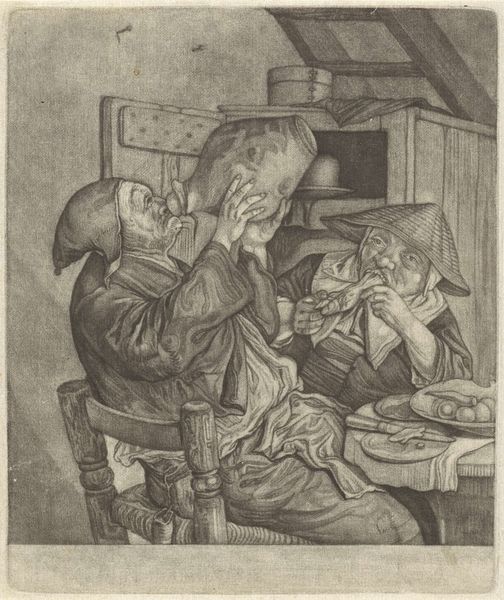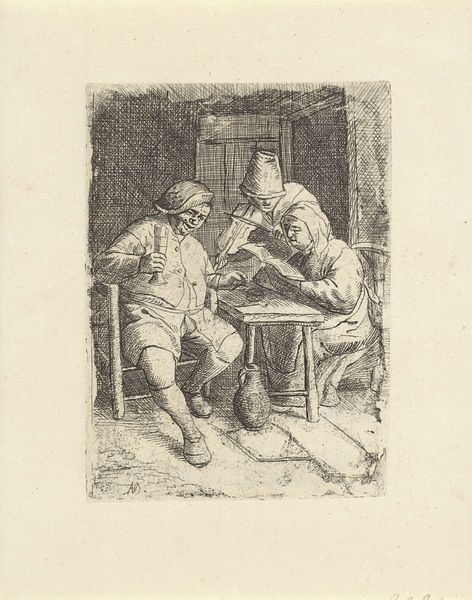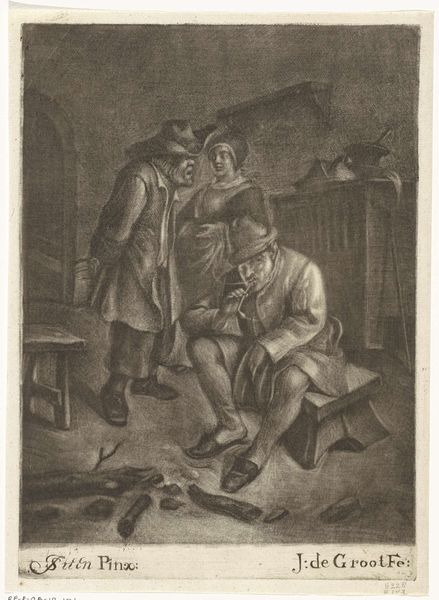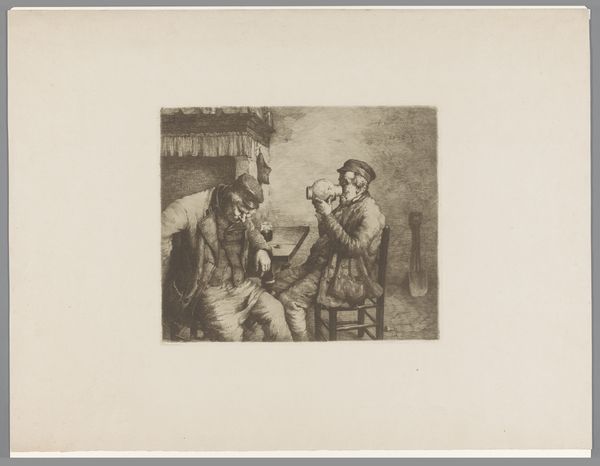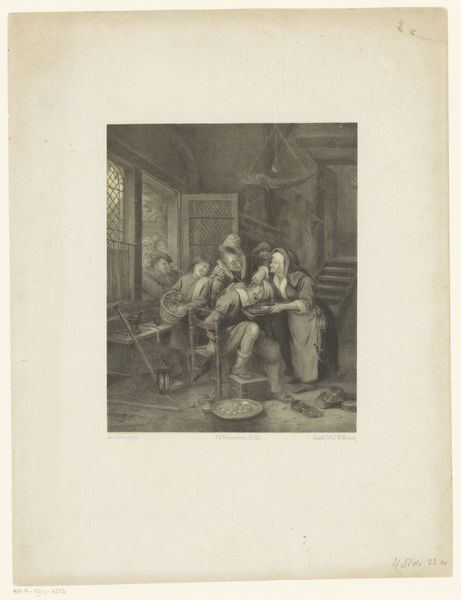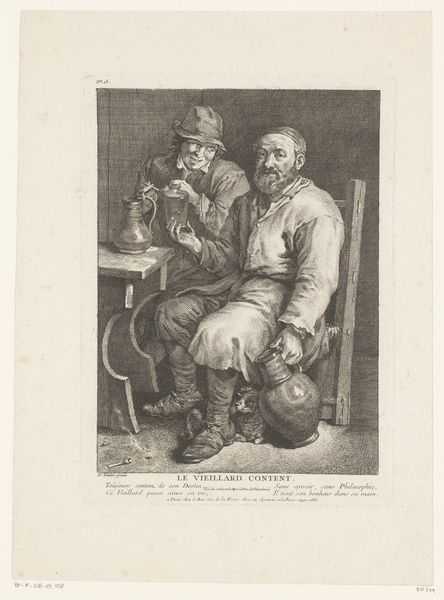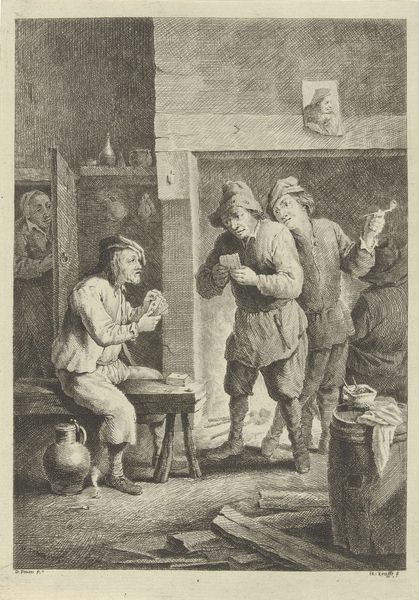
print, engraving
#
portrait
#
neoclacissism
# print
#
old engraving style
#
historical photography
#
19th century
#
genre-painting
#
engraving
Dimensions: height 268 mm, width 206 mm
Copyright: Rijks Museum: Open Domain
Curator: This engraving, completed in 1803, is titled "Jonge vrouw biedt een man een glas wijn aan," which translates to "Young woman offering a man a glass of wine." It's attributed to Jacob Ernst Marcus and forms part of the Rijksmuseum collection. Editor: My first impression is of intimacy and understated drama. The stark monochrome tones create this kind of beautifully serious, quiet tableau—almost like a scene captured mid-story. The wine being poured feels weighty, meaningful. Curator: The work embodies Neoclassical elements through its focus on balanced composition and clear lines. These engravings, typically, circulated as part of a broader culture of printmaking in the 19th century, allowing art and narratives to be widely accessible, disseminating social and moral themes. Editor: You're so right, there’s such accessibility in this. It draws me into this strangely theatrical and artificial space—almost like these two figures are performing for my benefit. I can imagine how those strong, unwavering lines create something that would be easily understood and, importantly, reproduced. Curator: That gets at the intent: genre paintings, like this, aimed to illustrate everyday life. Through prints, lessons—particularly about social interactions, and expected norms of behaviour—reached vast audiences. These are tools of public education, if you will. It invites viewers to contemplate the dynamics of male and female relationships, power dynamics in this very specific setting. Editor: I read that dynamic differently! She is so composed while his expression is sort of, well, distracted and a little sloppy, really. Maybe the glass being offered has a certain sense of "obligation" or "care"...maybe it's an ambivalent thing, an ambivalent pouring from an ambivalent woman to a man in deep contemplation... Curator: Well, either way, pieces like this prompt fascinating perspectives on gender roles and behaviours within the social contexts of that period. Its historical significance also speaks to the development of print culture and its impact on spreading ideas. Editor: And for me, its power resides in its subtlety, that tension you mentioned and the unspoken aspects of the story playing out here; making you think not about that time as much, maybe, but that time AS TIME, the old constant play with each other! Curator: A good reminder to contemplate its value to contemporary audiences as it serves both an artistic purpose, a historical witness to societal values of that time and more than an echo chamber of artistic ideals.
Comments
No comments
Be the first to comment and join the conversation on the ultimate creative platform.
